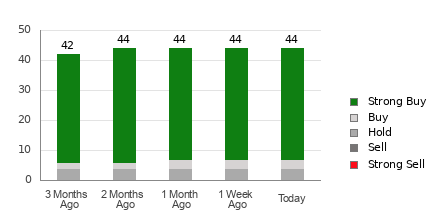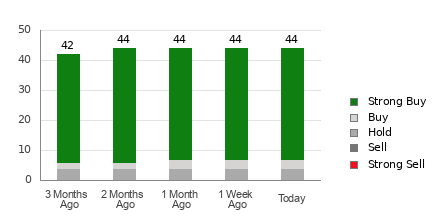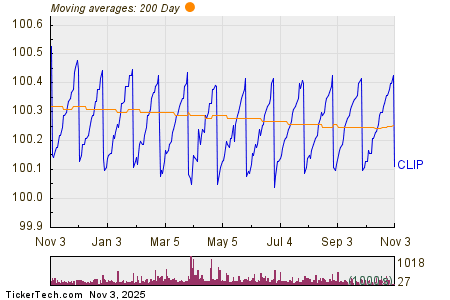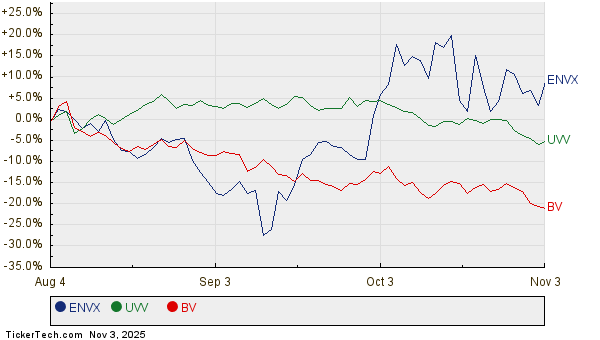Understanding Wall Street’s Take on Nvidia: Valuable Insights or Just Noise?
When it comes to stock investment decisions, many investors rely on guidance from Wall Street analysts. But how much weight should you really give to these recommendations, especially regarding Nvidia (NVDA)? Let’s explore what analysts are saying and how to interpret their insights.
Nvidia currently has an average brokerage recommendation (ABR) of 1.25, based on recommendations from 44 brokerage firms. This scale ranges from 1 to 5, where 1 indicates a Strong Buy and 5 signifies a Strong Sell. An ABR of 1.25 falls between Strong Buy and Buy.
Among the 44 recommendations, 37 classify Nvidia as a Strong Buy, while three categorize it as a Buy, representing 84.1% and 6.8% of all recommendations, respectively.
How Analysts Are Rating Nvidia

While the ABR signals a positive outlook for Nvidia, it’s important to be cautious. Studies indicate that brokerage recommendations often have limited success in helping investors select stocks with significant growth potential.
Why is that? Analysts from brokerage firms often have a bias towards stocks, mainly incentivized by their firms’ interests. Data shows that for every “Strong Sell,” there are about five “Strong Buy” suggestions, demonstrating a potential misalignment with retail investor interests. Hence, it is advisable to use this information as a supplementary tool, rather than the sole basis for investment decisions.
The Zacks Rank, an audited tool that classifies stocks from Zacks Rank #1 (Strong Buy) to Zacks Rank #5 (Strong Sell), serves as a valuable complement to the ABR. It has proven effective in forecasting short-term price movements based on earnings revisions.
The Distinction Between Zacks Rank and ABR
It’s essential to distinguish between the Zacks Rank and ABR, despite both using similar scales. The ABR is based exclusively on broker recommendations and typically includes decimals (e.g., 1.28). In contrast, the Zacks Rank leverages earnings estimate revisions, providing a straightforward whole number ranking.
Brokerage analysts often remain overly optimistic due to their affiliations, leading to more favorable ratings than warranted by their research. Conversely, the Zacks Rank uses earnings estimate trends, which have shown strong correlations with stock price movements.
This ranking system maintains a proportional balance across stocks analyzed by brokerage firms, ensuring a fair assessment. Additionally, the Zacks Rank reads current earnings estimates, whereas the ABR may not always reflect the latest market dynamics, making it a more timely measure for predicting stock performance.
Is Nvidia a Good Investment?
Regarding Nvidia, the Zacks Consensus Estimate for the current year has grown by 0.4% over the past month to $2.94. This upward trend reflects analysts’ increasing confidence in the company’s earnings potential, signaling promise for near-term stock performance.
The consensus estimate change, in conjunction with three other earnings estimate factors, has resulted in a Zacks Rank #2 (Buy) for Nvidia. For a complete list of today’s top-rated stocks, you can explore further.
Thus, while the ABR suggests a buying opportunity, investors should seek additional insights to inform their decisions creatively.
Accessing Zacks’ Stock Recommendations for Just $1
It’s not a joke.
A few years ago, we surprised our members by offering 30-day access to our stock picks for only $1, with no further commitments.
Many took advantage of this offer, while others hesitated, suspecting a catch. Our goal was simple: let you become familiar with services like Surprise Trader, Stocks Under $10, Technology Innovators, and more, which included 228 profitable positions in 2023.
Looking for the latest stock recommendations from Zacks Investment Research? Download our list of the 7 Best Stocks for the Next 30 Days for free.
NVIDIA Corporation (NVDA): Free Stock Analysis Report
To read this article on Zacks.com click here.
Zacks Investment Research
The views and opinions expressed herein are the views and opinions of the author and do not necessarily reflect those of Nasdaq, Inc.









